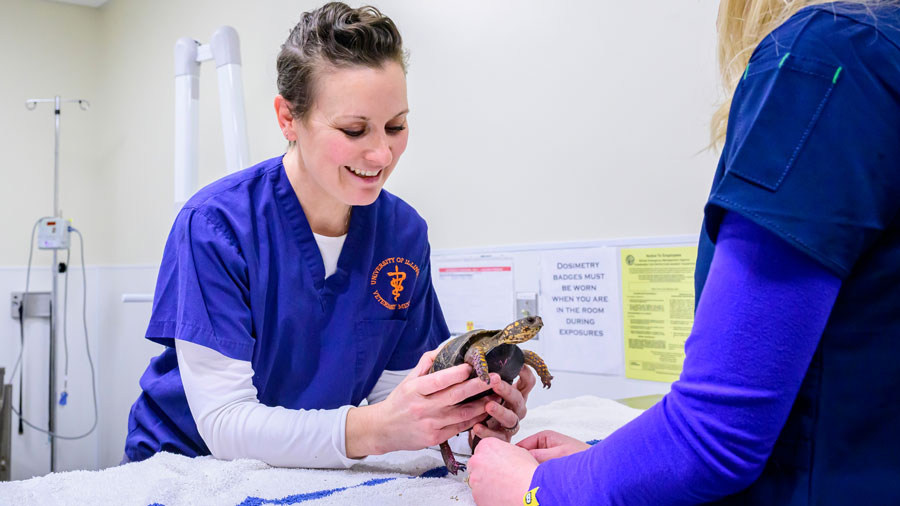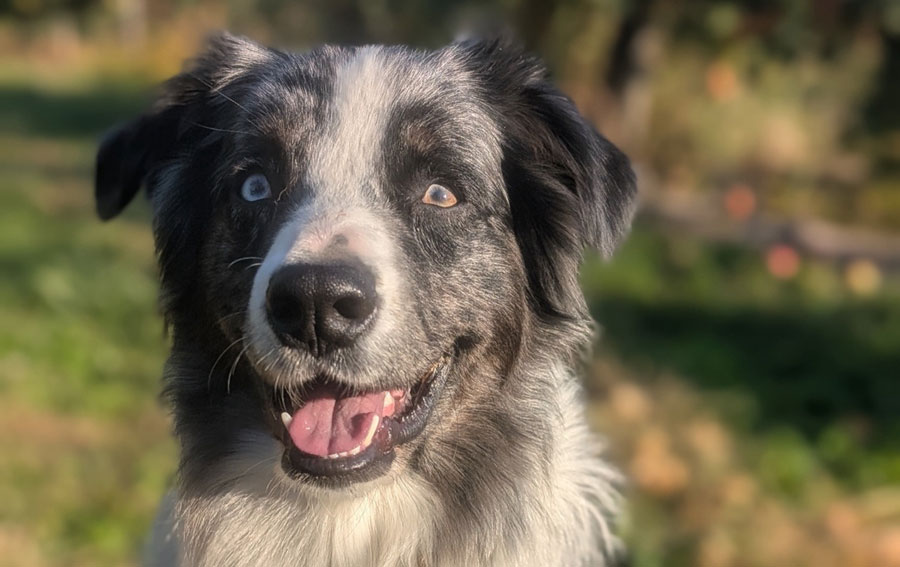Animals typically develop acne in middle age
Acne plagues many teenagers and even adults, but did you know that animals get pimples too? Dr. Jason Pieper, a board-certified veterinary dermatologist at the University of Illinois Veterinary Teaching Hospital in Urbana, sees a few cases of pet acne every year.
Acne occurs when a hair follicle becomes plugged. Hair follicles lie within the skin. They cradle the root of a hair shaft, which grows out of the middle of the follicle, and supply the hair with protective oils from attached glands.
Acne Most Common on the Chin
“It is possible for any animal to get acne,” Dr. Pieper says, “although we see it most commonly in cats and dogs.” There isn’t a particular breed or sex that is predisposed to acne. Unlike the humans, who are acne-prone in their teens, animals typically develop acne in middle age.
![[cat acne]](https://vetmed.illinois.edu/wp-content/uploads/2021/04/pc-chin-acne.jpg)
“Hair follicles sometimes become infected. If the plugged follicle is irritating, the animal may scratch and rub the area, introducing bacteria into the pores,” says Dr. Pieper. Once infected, the acne may have a white or yellowish color.
Cause of Pet Acne Unknown
“The main difference between acne in humans and pets is: we don’t know what causes acne in pets,” Dr. Pieper says.
One theory is that the acne is a result of damage to the hair follicle, for example, when the pet drinks water from its bowl and repeatedly bumps its chin. A damaged hair follicle may become plugged with oils.
Veterinarians diagnose pet acne by looking at the area and asking the owner questions about how long the acne has been visible and whether it is irritating to the animal.
“A biopsy of the acne is the only true way to know if it’s acne,” says Dr. Pieper. A biopsy involves removing a hair follicle and examining it with a microscope. It the hair follicle is swollen from increased oil, that’s acne.
Prevent Acne by Cleaning Bowls, Toys
To treat acne, it is important to keep the area clean and dry. The chin and muzzle area are often wet from drinking, which can predispose that area to reoccurring acne. Pet owners can use a washcloth to gently clean the area.
“If there is infection of the area, we need to determine what sort of bacteria is causing that and treat the infection,” Dr. Pieper explains. Once the infection is treated, the acne should clear up on its own.
“Owners can help prevent acne by keeping bowls used for eating and drinking clean by washing them regularly,” Dr. Pieper says. Toys should also be washed regularly.
Pet owners should see their veterinarian when the acne is irritating to the animal or looks infected, red, and inflamed. The veterinarian will be able to decide the best course of action to get the acne cleared up.
For more information about pet acne, contact your local veterinarian.
By Beth Mueller

![[cat acne column]](https://vetmed.illinois.edu/wp-content/uploads/2021/04/pc-pieper-acne.jpg)


